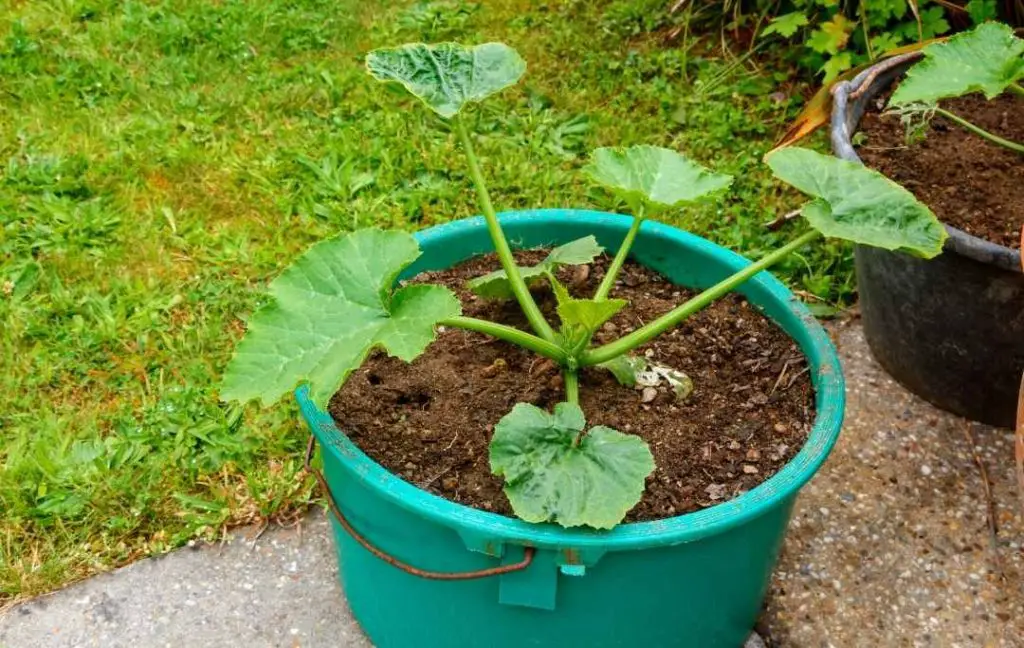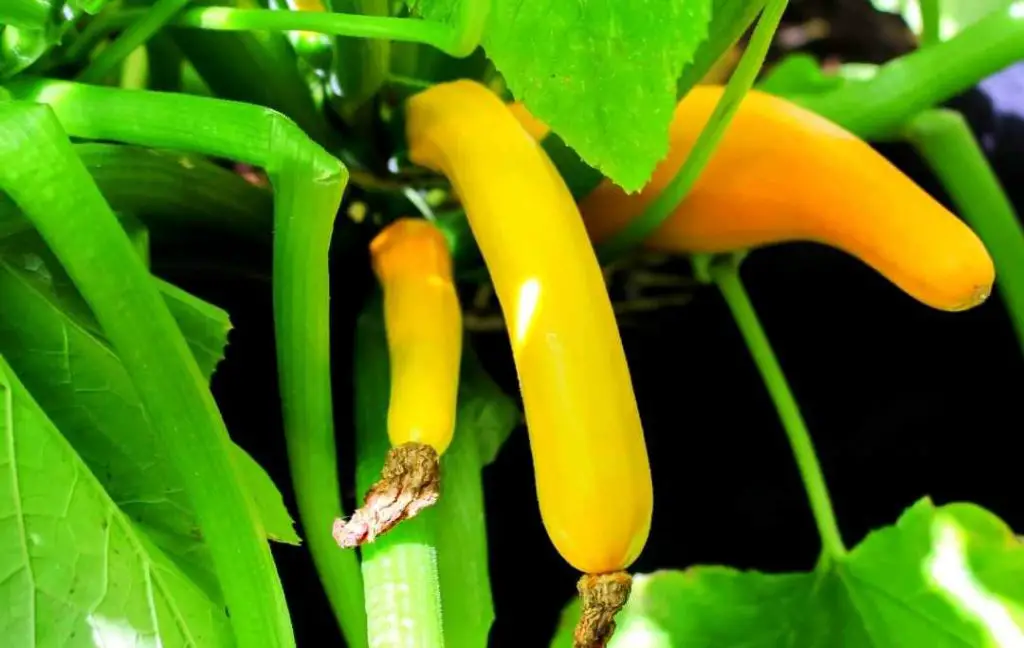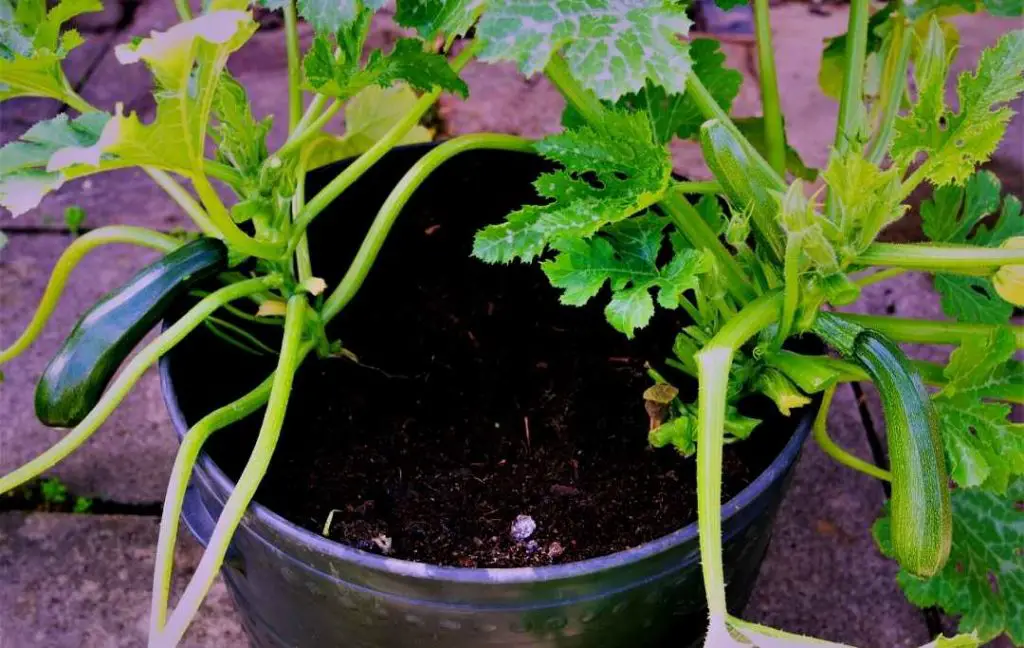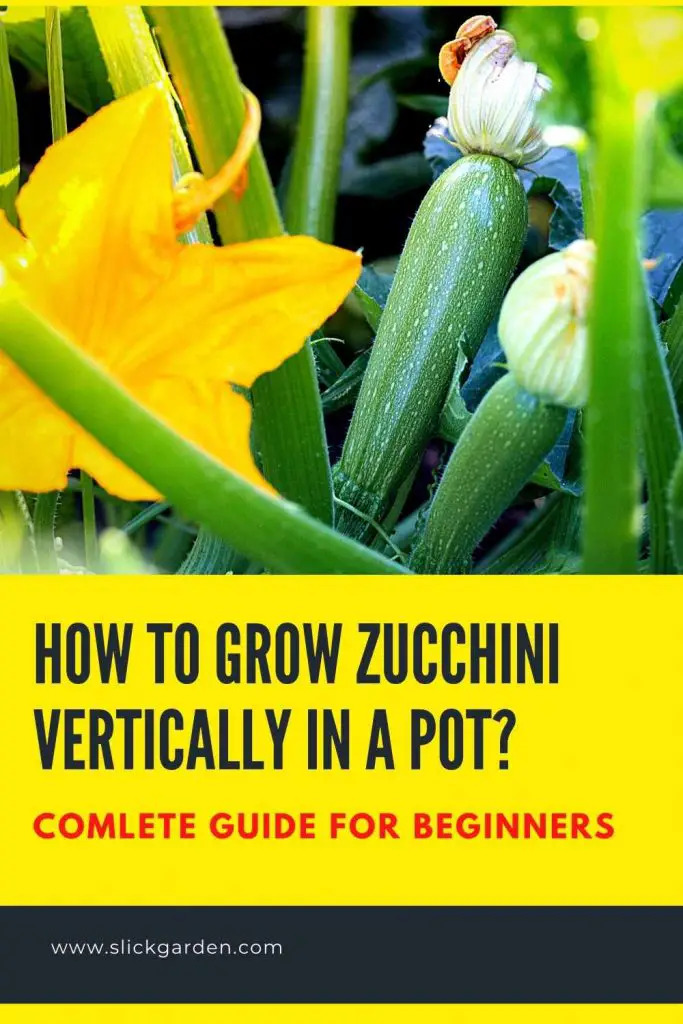Growing zucchini in a pot or a container is the best option for the small growing area. You can also grow it on a balcony or patio and get fresh fruit in the summer season. You can become a successful gardener for growing zucchini if you don’t have a garden.
Zucchini is a sprawling plant and grows quickly. This plant tends to overtake garden beds and spread out many feet in all directions. If you grow it vertically then you will save your space and harvesting will become much easier.
Why Grow Zucchini In A Pot?

There are many reasons for growing a prolific vegetable like zucchini in a pot. A single plant of zucchini can give you an abundant harvest during the summer season.
Most gardeners like to grow zucchini in containers although they have enough space in their garden. The reason is that harvesting becomes easier in the pot or container. You can keep your growing area tidier. The sprawling plant can take over your veggie patch.
Choosing The Right Pot For Growing Zucchini Vertically In A Pot
Due to a large root system, zucchini plants need a big and 36 inches deep pot. The long tap roots will get ample space for producing healthy and tasty fruit for your kitchen.
A bush-type cultivar is the best choice for growing in a pot. For a bush variety, you can use a 16 inches wide and 16 inches deep pot.
Your pot must have drainage holes or you can use a pot that is made of porous material for additional drainage. Terra cotta, cement, or ceramic are the best materials. You can also use plastic pots but there is a risk of waterlogging. The drainage holes at the bottom will keep your plant healthier.
Make Ready Your Pot For Planting
CLEANING THE POT
If you don’t want to spread any disease in your newly planted plants then the pot you choose should be cleaned. If you are using an old pot then you should first clean it with bleach.
Make a solution of bleach with water for cleaning the pot. The ratio should be one part of bleach and 30 parts of water. After cleaning the pot, you can use it for growing zucchini.
FILLING OF POT WITH SOIL
- When you grow plants in a container or pot or even in a raised bed then you will get an opportunity to maintain the fertility of the soil. Don’t use garden soil in the pot.
- You can use soil mixes that have vermiculite, peat moss, coconut coir, and sand. Well-drained soil is suggested for growing zucchini to avoid waterlogging.
- You can also use fertilizer before sowing the seeds in the pot. When your pot is one-third full with the soil then you can add 10-10-10- granular slow-release fertilizer. You can also add calcium amendments such as calcium chloride or calcium sulfate.
- If you don’t want to add fertilizer then you can also add well-rotted compost. The ratio of the compost to the soil is one part compost to six parts of soil.
Site Selection For Your Pot
Sunlight is a very important factor for the growth of your plants so you should choose that spot where your pot receives at least six hours of sunlight per day.
- Select a sunny location for your zucchini plants so they will produce delicious treats for you.
- Water is another important factor so your location of the pot must be near a water source.
- Air circulation is very important for your plants. As zucchini is a vining plant so it needs perfect support to hold the fruit. You can use a trellis which will not only provide support but at the same time, your plants will get the appropriate amount of air for breath. It will help to prevent your plants from diseases.
Which Zucchini Varieties Grow Best In Pots?

Choosing the right variety of zucchini for your pot is an important decision. The varieties of zucchini are available in two categories: bushy and vining. First, we will discuss these two categories one by one which will help you in choosing the right category for your pot.
VINING VARIETIES
These varieties have long and snaking stalks. Near the end of the stalk, you will have the fruit of this type of variety. You must have a lot of space for growing this vining variety. You need proper support for growing these varieties.
BUSHY VARIETIES
This variety needs less space because they are much more compact. Your favorite fruit and leaves will grow from the central point. It means these varieties will not grow in all directions.
By comparison of these two varieties, you can easily decide, bush variety is best for container gardens. But if you have a large enough pot then you can grow vining varieties.
Here are some best varieties which you can grow in pots.
1- ASTIA
This is a French bush variety that is best for growing in pots. After 48 days, you can harvest the fruit for cooking purposes.
2- BUCKINGHAM PATIO
The height of this variety is about 12 inches. The golden yellow fruit of this variety can mature within 40 days.
3- BUSH BABY
The height of this plant reaches 18 to 24 inches. The dark green fruit has green stripes. The fruit matures within 59 days.
4- DARK GREEN
This compact variety produces dark green fruit with pale flesh. After 45-55 days you will harvest the fruit.
5- GOLDEN
The color of the fruit is a bright yellow that’s why it is called ‘Golden’. The height of this bush variety is about 3 to 4 feet tall. The maturity time is about 50-55 days.
6- GREY
The other name of this bush variety is tender grey. The other name of this variety is ‘Tender Grey’. It is a heat-resistant variety that can grow 24-36 inches tall. The maturity time of fruit is 42 to 45 days.
7- PATIO STAR
Although it is a bush variety it produces tons of full-sized fruit. The height of this plant can be 2 to 3 feet tall and is best for container gardening. The maturity time of fruit is 40 days.
8- RAVEN
The dark green fruit of this variety has antioxidants. The height of this variety can be 2 feet tall. You will get mature fruit in 42 days.
Read More
- 20 Best Vegetables To Grow In Buckets
- How To Grow Lemongrass In Pots
- How To Build A Vertical Herb Garden
How To Grow Zucchini Vertically In A Pot?

Here are some steps of growing zucchini in a pot.
STEP 1
Zucchini likes to grow in warm climates. You should not take a risk of frost because it will destroy your plants. It is better to prepare your seedlings indoors for transplanting them in the pot.
Take an empty cardboard egg carton and fill each cup with potting soil. After that sow the seeds in each cup. Place the egg carton in a sunny spot and water it thoroughly.
Moist soil is needed for sprouting the seeds. After a couple of weeks, the seeds will sprout and you will see seedlings start growing.
STEP 2
Before transplanting the seedlings in the pot which you prepare, you will need to harden them off. For this purpose, start placing your seedlings outdoors in indirect sunlight for a few hours for three to four days.
After that, place them in direct sunlight for two days. On the seventh day, your seedlings are ready to face direct sunlight.
STEP 3
At this stage, transplant the seedlings in the pot which you have already prepared. You need to cut the seedlings cup apart on the egg carton. You can plant the seedlings with the egg carton, there is no need to remove them.
STEP 4
Now stick three tall wooden stakes into the soil around the edges of the pot. At the top, tie them together with the help of a strong string. You can also use a tomato cage for providing support to your zucchini plants if you like.
STEP 5
As the plants grow, you can tie the stalks to the wooden stakes. Lift the leaves before tying the stalks. Keep in mind that there is no need to tie stalks too tightly.
You should continue the process during the growing season. When you do all the steps carefully then you will see your zucchini plant will grow healthily.
STEP 6
Your zucchini plants need water frequently during the hot season. The heat of the sun dries the soil so you should increase the frequency of the water after checking the soil with your finger.

Pests And Diseases
Few insects attack container-grown zucchini. Here are some pests which like to eat the fruit and invade vines and leaves.
CUCUMBER BEETLES
They nibble holes in the leaves of zucchinis plants. These holes are clear symptoms of the presence of cucumber beetles. The color of this pest is yellow with black stripes. You can cover the seedlings with a floating row cover to protect plants.
SQUASH BAGS
They lay eggs on the undersides of the leaves. These eggs are visible signs that you have an infestation. You should keep an eye on your plants. If you spot the eggs then pull them off from plant leaves with the help of duct tape.
Some diseases are under which can destroy your zucchini plants.
BACTERIAL WILT
It is caused by a type of bacteria that is spread by cucumber beetles. This disease can kill your plant. The only defense is to keep these pests away from your plant.
BLOSSOM-END ROT
Inconsistent water and calcium deficiency is the reason for this disease. A regular and consistent supply of water and adding calcium can protect your plant because there is no cure for this disease.
POWDERY MILDEW
Fungus is the reason for spreading this disease in your zucchini plants. Powdery mildew makes the leaves look dusted with flour. During the rainy season or in humidity this disease thrives.
You can use a spray of milk, water, and a few drops of dish soaps. Use this spray twice a week with neem oil. The other option is organic fungicide containing potassium bicarbonate.
Read More
